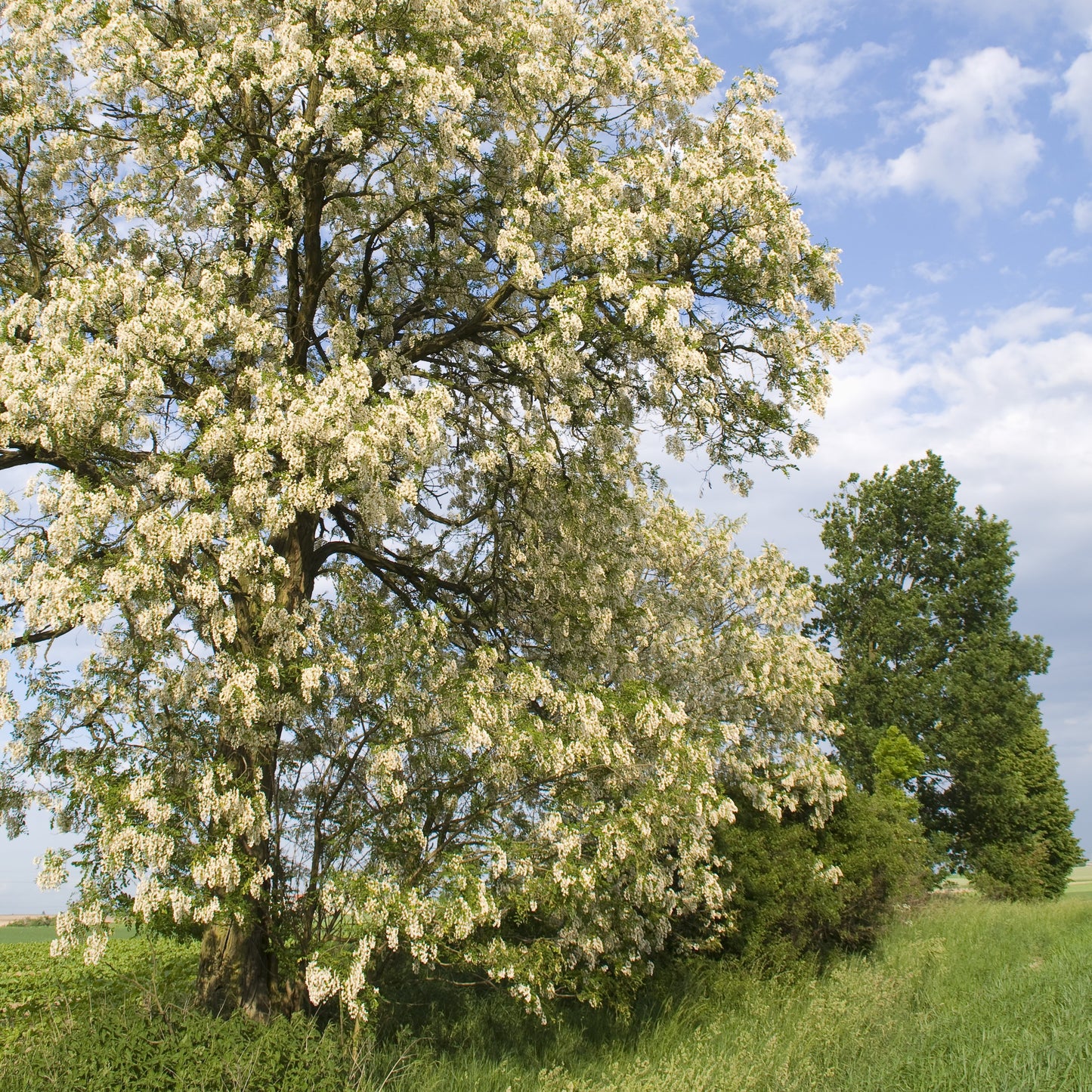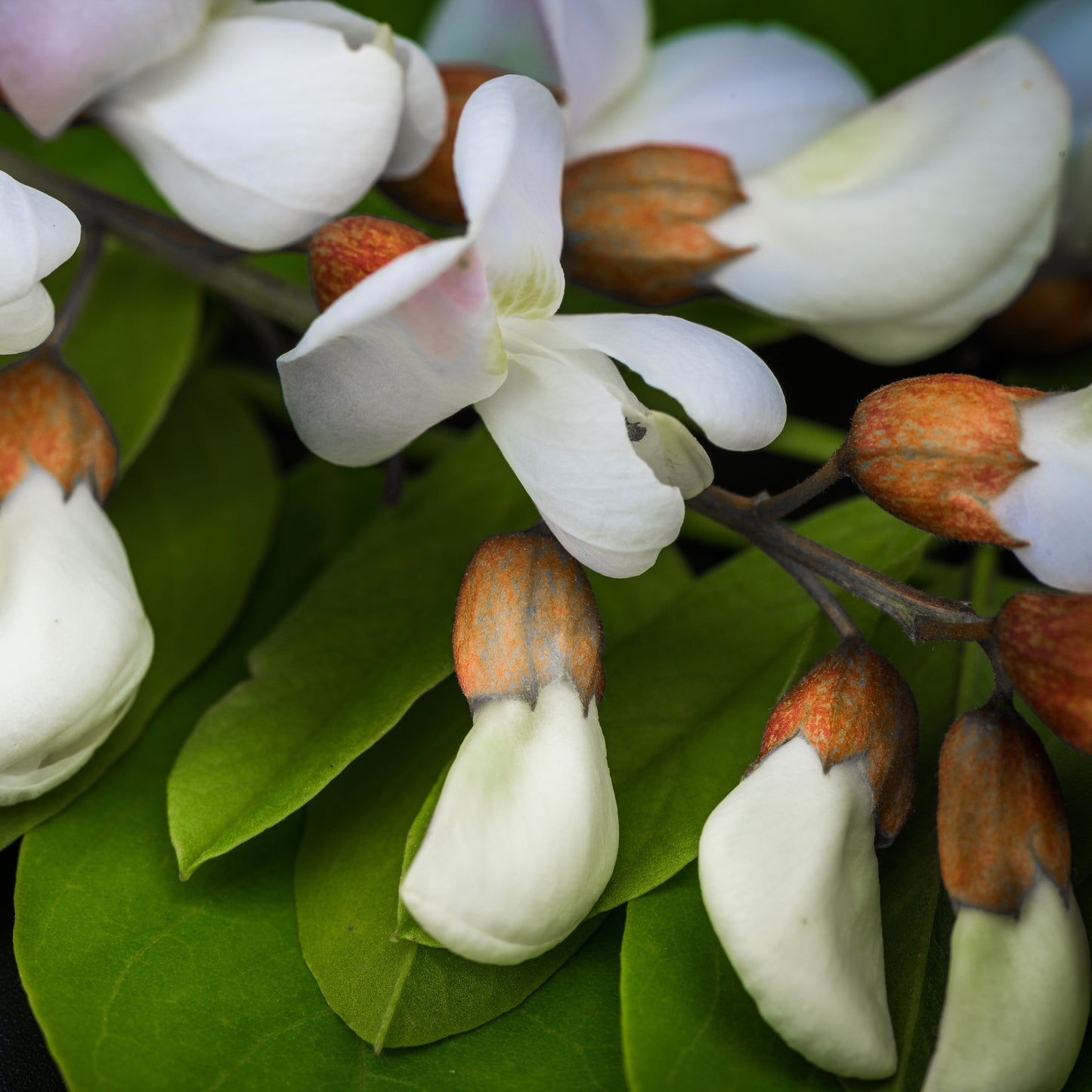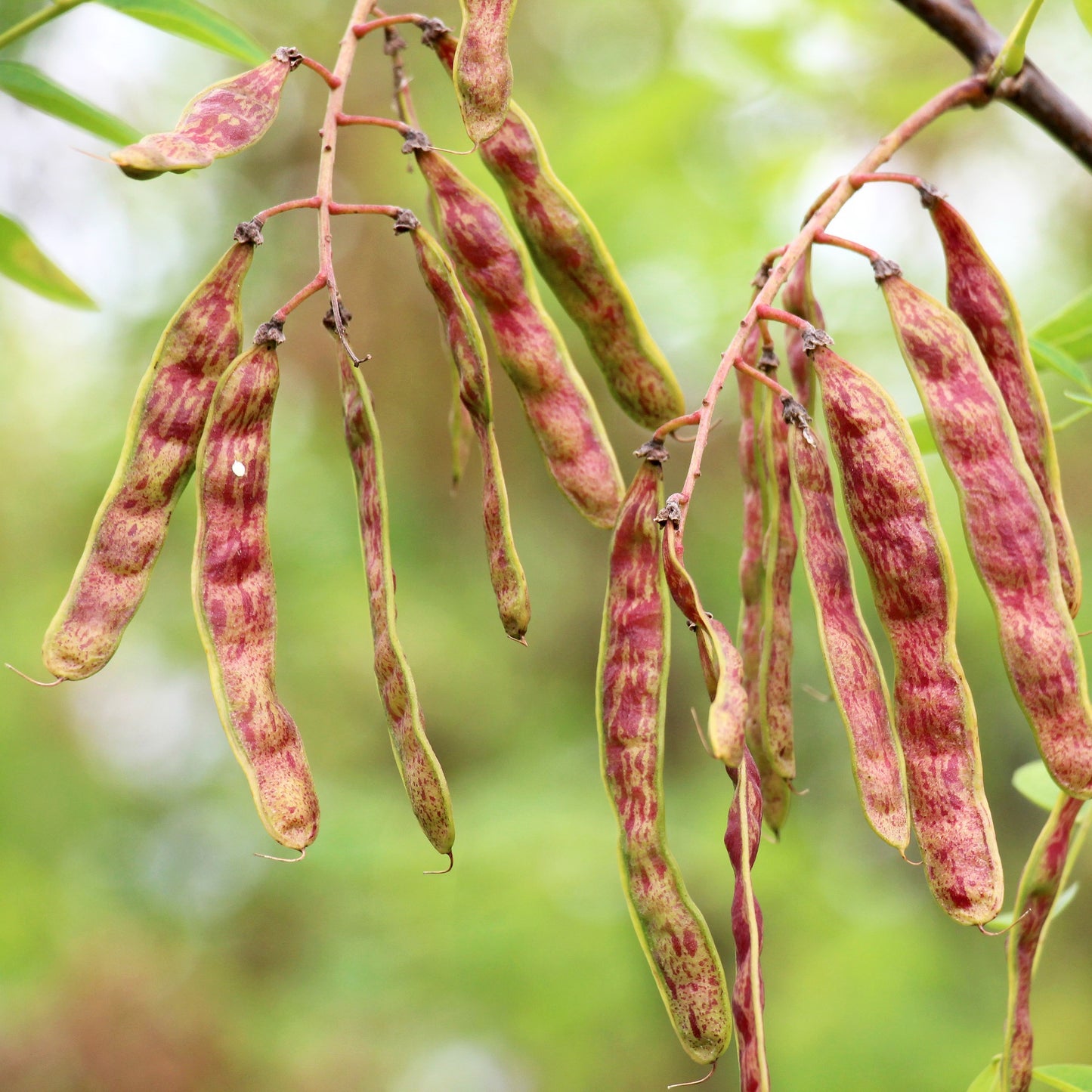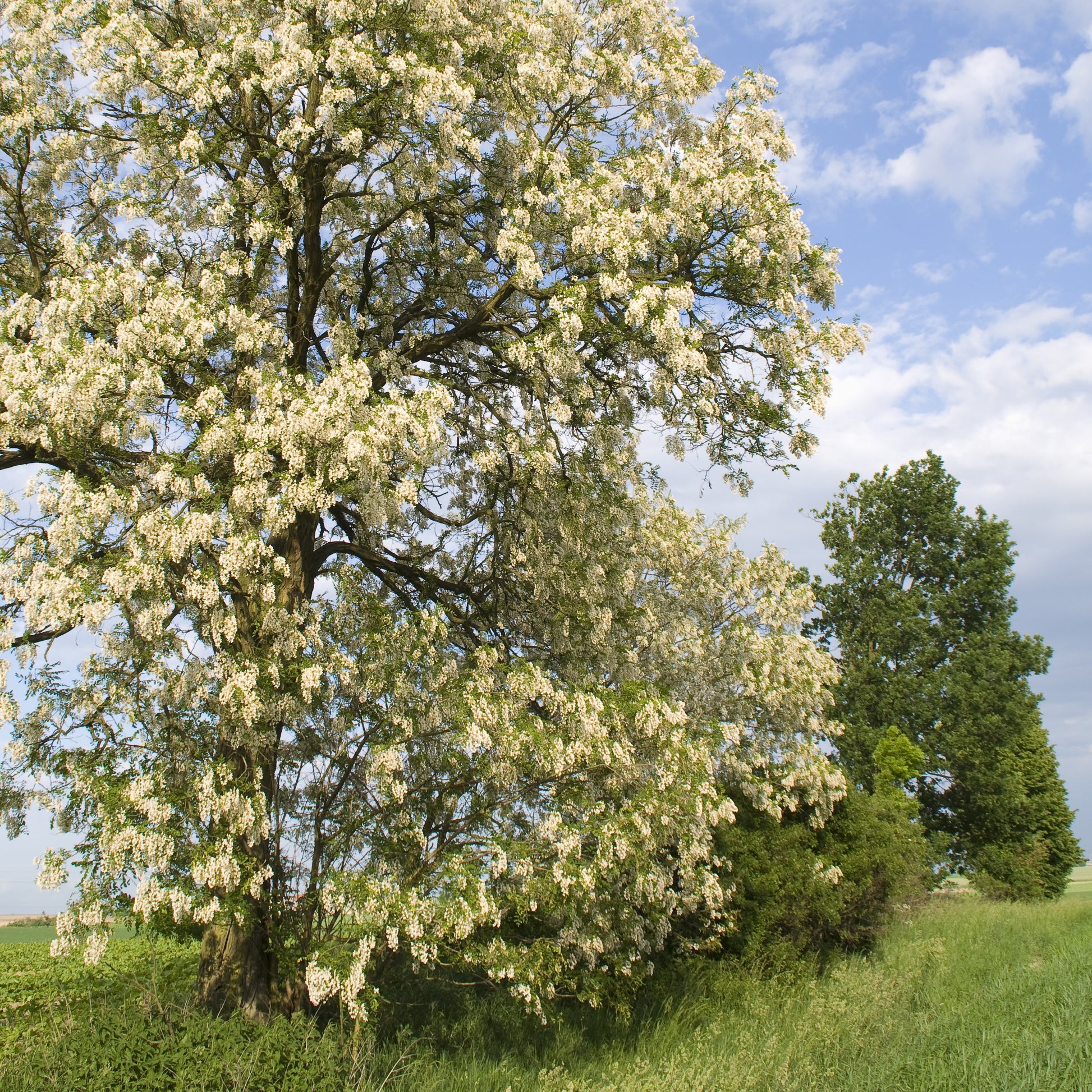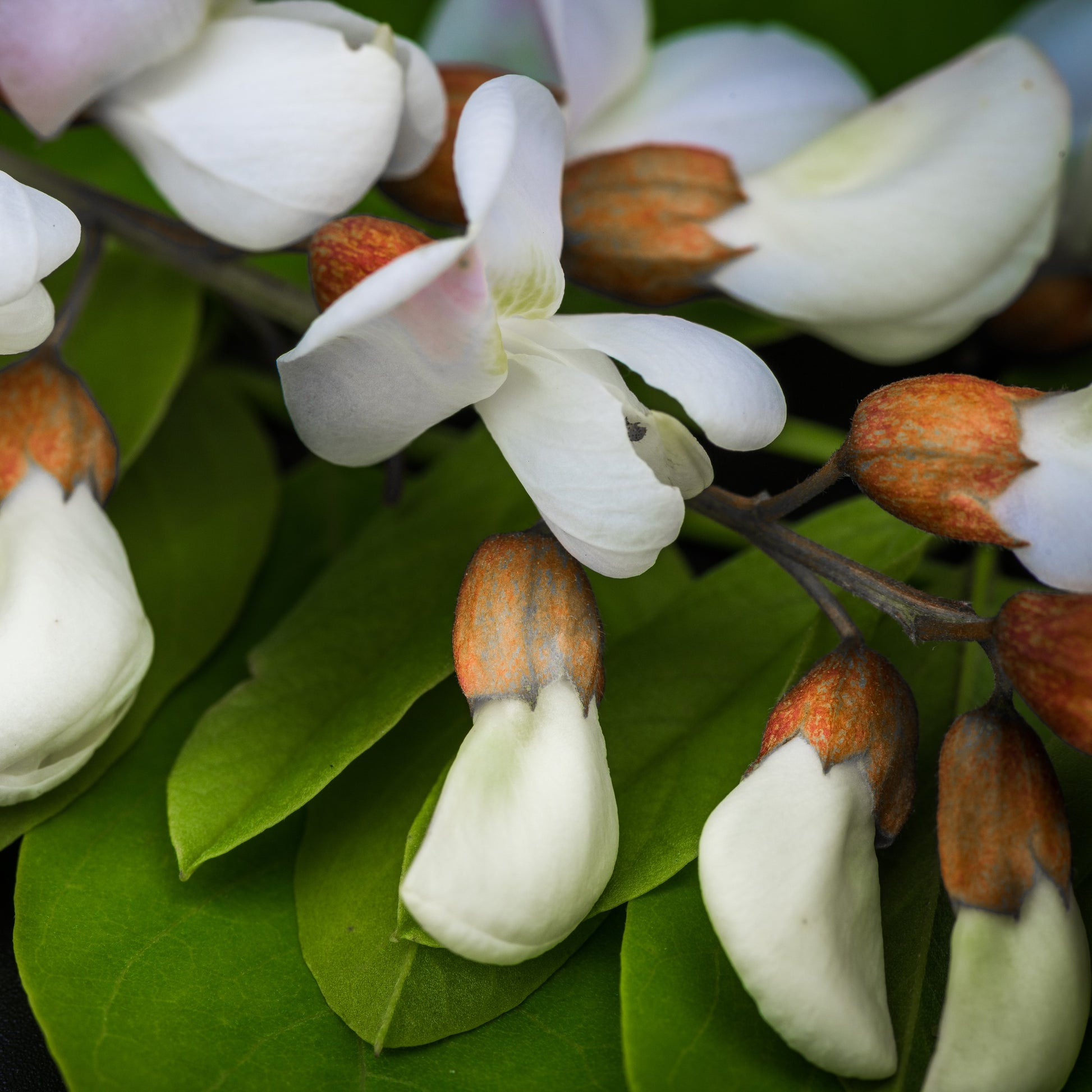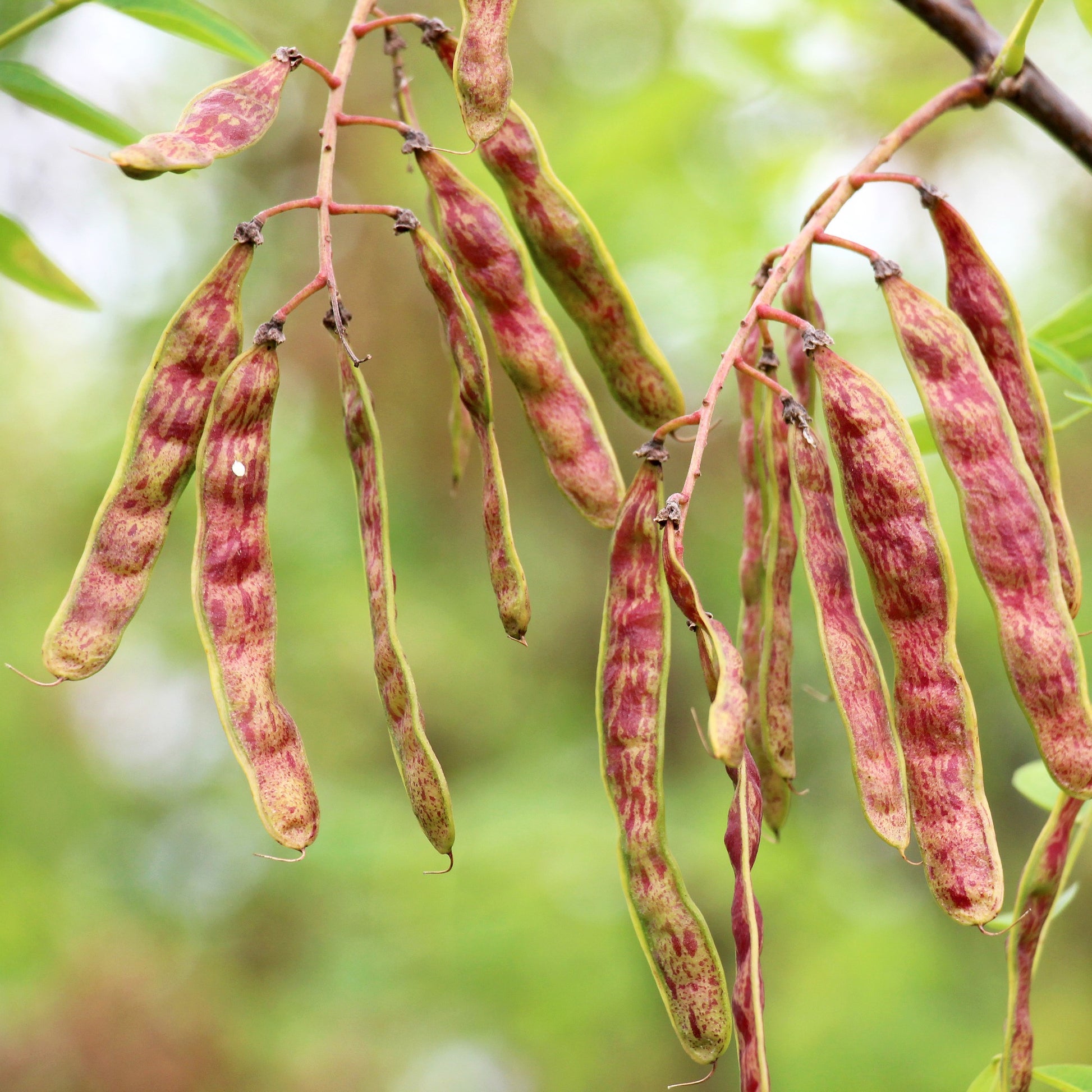Limited Quantities - Reserve Now For Fall
Black Locust Tree
Black Locust Tree
Couldn't load pickup availability
Robinia pseudoacacia
Black Locust Tree
The Black Locust Tree is a fast-growing, nitrogen-fixing native tree known for its fragrant white flowers, durable wood, and adaptability to poor soils. This resilient species thrives in tough environments, making it a valuable choice for reclamation projects, erosion control, and pollinator support.
With an upright form, dappled shade, and sweet-scented blooms in late spring, Black Locust brings both utility and beauty to farms, homesteads, and wild landscapes.
Black Locust Tree Overview
| Attribute | Details |
|---|---|
| 🌿 Botanical Name | Robinia pseudoacacia |
| 🏷️ Common Names | Black Locust, False Acacia |
| 🌳 Mature Height | 40–70 feet |
| 🌐 Mature Width | 30–50 feet |
| 📈 Growth Rate | Fast (2–4 feet per year) |
| ⏳ Lifespan | 30–100+ years |
| 🧊 USDA Zones | 4–9 |
| ☀️ Sun Preference | Full sun (essential for strong growth and flowering) |
| 🧱 Soil Type | Tolerates poor, sandy, rocky, or compacted soils |
| ⚖️ Soil pH | Very adaptable (4.5–8.0) |
| 💧 Water Needs | Low to moderate; drought-tolerant once established |
| 🌸 Flower Color | Fragrant white pea-like clusters; blooms in late spring |
| 🐝 Pollination | Attracts bees, butterflies, and beneficial insects |
| 🌿 Growth Habit | Upright with open crown and irregular branching |
| ↔️ Spacing | 30–50 ft for reforestation or shade applications |
| 🏡 Landscape Uses | Windbreaks, erosion control, wildlife habitat, pollinator plantings |
| 🧹 Maintenance Level | Low to moderate |
Environmental Benefits
🌸 Supports native pollinators and honeybees with fragrant blooms
🌿 Improves soil health by fixing nitrogen in depleted areas
🌞 Provides fast shade and wind protection in open landscapes
🪵 Excellent for reclamation, agroforestry, and erosion control
Pros & Cons
| ✅ Pros | ⚠️ Cons |
|---|---|
| 🌿 Extremely tough and drought-tolerant once established | 🌱 Can spread by root suckers if unmanaged |
| 🐝 Highly attractive to pollinators and beneficial insects | 🪵 Wood is extremely hard; not ideal for casual pruning tools |
| 🌞 Grows rapidly in poor or disturbed soils | 🌾 Considered invasive in some regions; check local regulations |
| 🪶 Provides habitat and nesting for birds and small wildlife | ✂️ Thorny young branches may require caution when handling |
| 🧬 Nitrogen-fixing and beneficial for degraded lands | 🍂 Drops small leaves and pods that may need occasional cleanup |
Planting & Care Guide
🛁 Water deeply during planting and regularly for the first season
🕳️ Dig a wide hole to accommodate root spread; plant at natural soil level
🌾 Apply 2–3 inches of mulch to retain moisture and suppress weeds
💦 Water weekly in hot, dry climates; reduce once established
✂️ Prune in late winter to remove suckers or shape young trees
🧪 Fertilizer not needed due to nitrogen-fixing ability
The Black Locust Tree is a hardy, fast-growing native that offers flowers, function, and forest regeneration in one tough package. Whether you're restoring land, building a windbreak, or adding beauty to a wild border, this resilient pioneer species delivers ecological value and rugged performance for decades to come.
Share
